Memories Front And Center: 5 Ways To Display Keepsakes
In a world that seems to have gone off the rails, many of us have taken comfort from trying to control the only thing we can at the moment – our home environment. Taming the clutter in closets, cabinets, attics and basements has benefits beyond the satisfaction of order and organization; it can also reacquaint us with items from the past that we may have forgotten.
Souvenirs from voyages taken, mementos passed down from family members or art projects lovingly created by children are important parts of our history. Keepsakes of happy times offer encouragement in present circumstances. Vintage family treasures remind us that difficulties are surmountable. So, instead of hiding them away, why not display meaningful mementos? Make them part of our décor. Give them a place of honor in our homes where we can appreciate them every day. Here are some ways (many from the Design NJ team!) to give treasured tokens the attention they deserve.
1: Take extra care with vintage photos.
Photos of our ancestors are priceless, creating a visible link that unites current generations with the ones that came before. But it’s important to remember that they need to be treated with care. Caryn Krueger, owner of CSM Art & Frame in Chatham, says, “Oftentimes these pieces need to be conserved as well as framed. In that case, we use conservation glass and museum framing techniques to insure that the pieces are protected.”
Museum-quality framing involves protecting an artifact from harm “not only from external factors like lighting, but also from improper materials and/or techniques used in the framing process,” according to MuseumFraming.com. Of course, it’s important to ask your framer which techniques would work best for your particular item. Stephen Escott, owner of Summit Frame & Art Inc., explains, “An important part of my job is to educate clients on the methods and materials used, not only to display the piece, but to preserve it for the next generation. As with any industry, the technology and materials are always changing and improving and it’s my job to learn all I can and share this with my clients so that they can make an educated decision and understand the value of doing it right the first time.”
Ren Miller displays these cherished family photographs in his home.
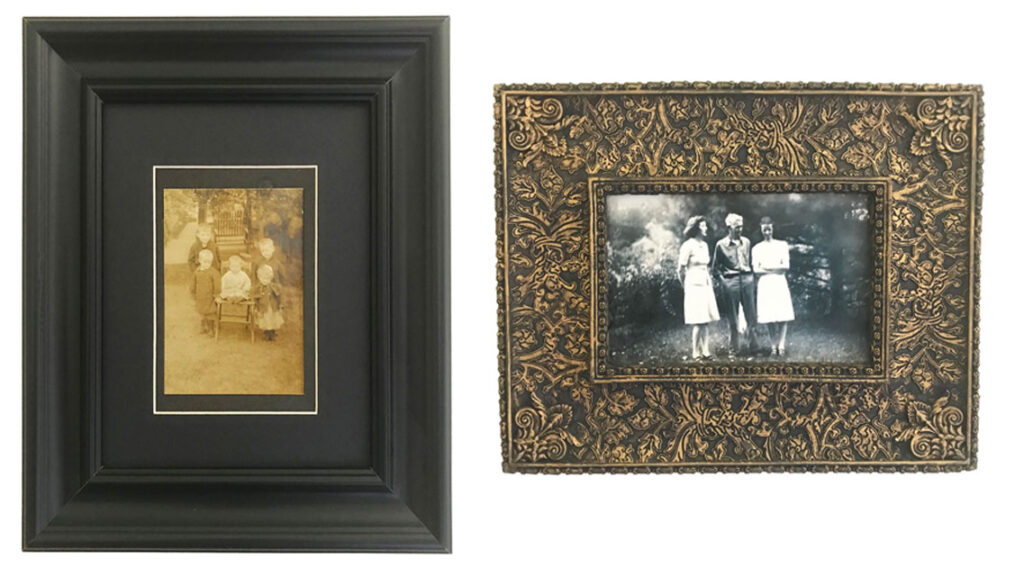
“The picture in the black frame is a photo of my Dad with four of his siblings in 1910 when he was 6 years old,” says Miller. “The other picture is of my mother (on the right), one of her sisters and my grandfather around 1935. My grandfather was notoriously camera shy; this is the only photo known to exist of him. It’s my tangible connection to him. These images are special to me because, not only do they show my parents when they were young, but they are the actual photos, not copies.”
2. Think beyond photographs.
Of course, family keepsakes come in many forms and there’s no reason why framing should be limited solely to photographs. With years of experience, both Krueger and Escott have worked with a wide variety of pieces. “We have framed everything from baby shoes to blankets to sand from Omaha Beach. There has never been anything that we were unable to put into an attractive frame,” says Krueger. Escott adds, “I have framed a collage of dog collars, beach badges, golf balls with photos and score cards, custom photo collages, even human hair.” DNJ publisher Tammy Keck’s home features meaningful family memorabilia:
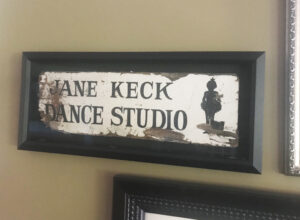
“My mom owned a dance studio in the basement of our Marlboro, NJ home for many, many years,” says Keck. “When I recently discovered this sign while cleaning out her garage, I knew that I wanted to frame it. It was crumbling and weathered after years of hanging from our mailbox. However the custom framer took great care to preserve it in a way that prevents further deterioration. This shadow box is a great conversation piece and reminds me of an iconic time in my life. Side note, that silhouette of a young ballerina posed in first position next to her ballet box is me. It served as my mom’s logo and was based on a photo taken before a recital sometime in the late 1960’s”
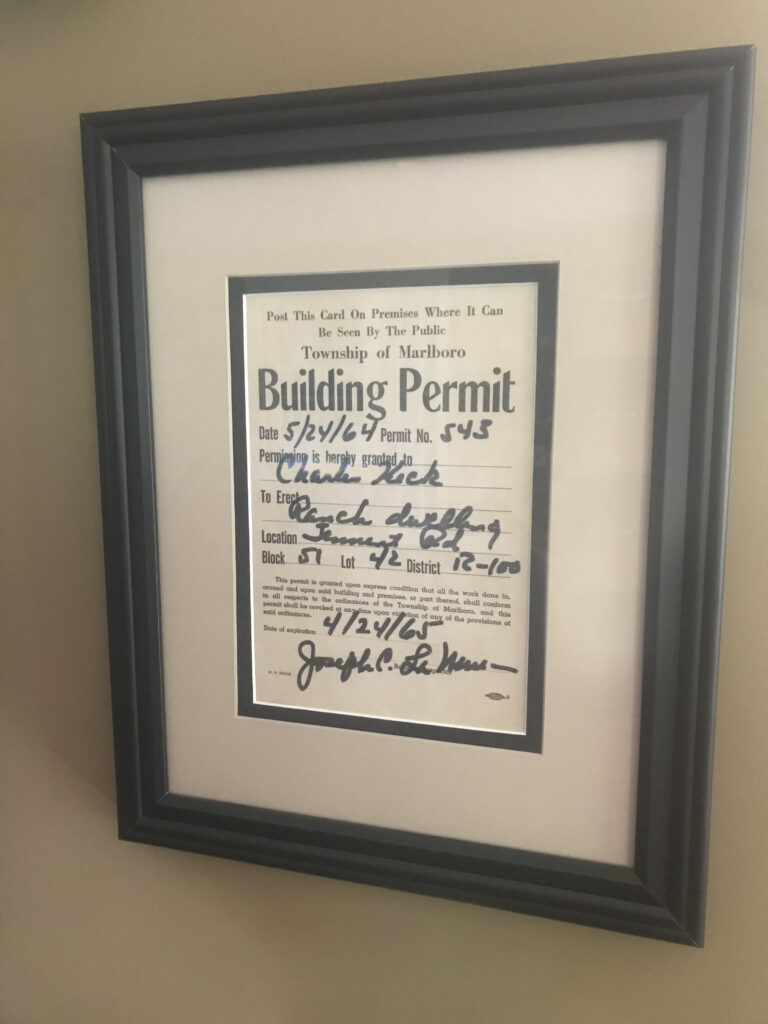
Keck says,”In 1965 my parents built the ranch home that I grew up in. They were quite proud of their custom home which featured many details that were state of the art at the time. We discovered the original building permit while cleaning out old files in preparation for selling the home. I had the permit professionally copied and framed as a gift to each of my five siblings. Each time I look at it I am flooded with memories.”
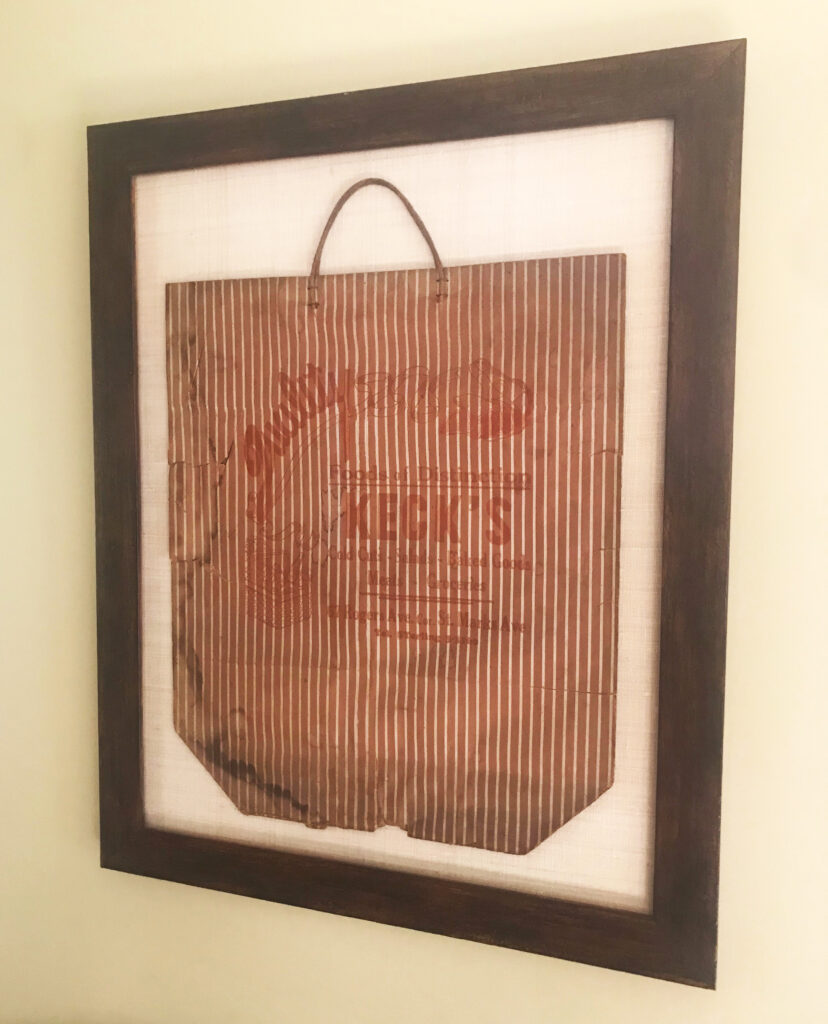
Keck shares, “My great-grandfather owned a butcher shop on St. Marks Avenue in Brooklyn. Every Sunday for years my five siblings and I were loaded into the Country Squire station wagon and driven from Jersey to visit him. My dad, who recognized my love of vintage family memorabilia, had this shopping bag (estimated to be about 100 years old) framed for me as a Christmas gift. Archival framing techniques help ensure that the piece does not continue to fade over time.”
DNJ’s Beth Powell honors her grandfather by displaying sketches he made as a student carpenter.
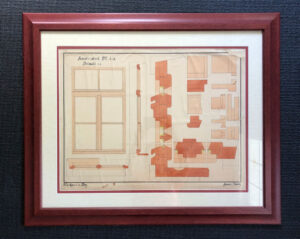
“This drawing was part of my grandfather’s apprenticeship when he was training to become a master carpenter in Germany in the late 1800s,” Powell says. “My grandfather emigrated to the United States before World War II. His basement was his personal workshop and always smelled of sawdust and wood stains.”
3. Don’t forget the backstory.
If you have interesting information about a piece’s provenance, it’s a good idea to include it in the display – both to inform those seeing the item for the first time, and and also to ensure that future generations will understand its meaning and value to your family. Krueger agrees. “We encourage clients to include detailed information regarding the piece, which we often include in the framing, on a brass plaque or at the very least on the back.”

Meg Fox explains that this Irish walking stick is part of her family’s legacy. It belonged to her great grandfather, Thomas Fox, a Civil War veteran who was said to “walk miles and miles every day using this stick,” until his death in 1936 at age 92.
4: Honor more recent history
It can be particularly gratifying to display items that reflect specific interests of family members. Showcasing a collection acknowledges a deep appreciation for an activity or hobby; for example, fishing lures for avid anglers, cookie cutters for baking enthusiasts or, as in the case below, album covers for music aficionados.

This Monmouth County home features a collection that represents 12 of the music-loving husband’s favorite albums. The details of the albums were copied and placed on the back for reference. Care was taken to maintain the integrity of the vinyl records, which remain in the album sleeves.
5. Highlight homemade masterpieces.
Children’s artwork doesn’t need to be relegated to the refrigerator. The most meaningful pieces can be framed and given a place of honor in your home. Escott understands the pull of these items and knows how to incorporate them seamlessly into a home’s décor. “When a client walks in with a project, I know it means a lot to them. It matters to them. I’ve learned to ask a lot of questions to try to come up with a great custom design for that particular item taking into account where it will hang and how the room is already designed.”
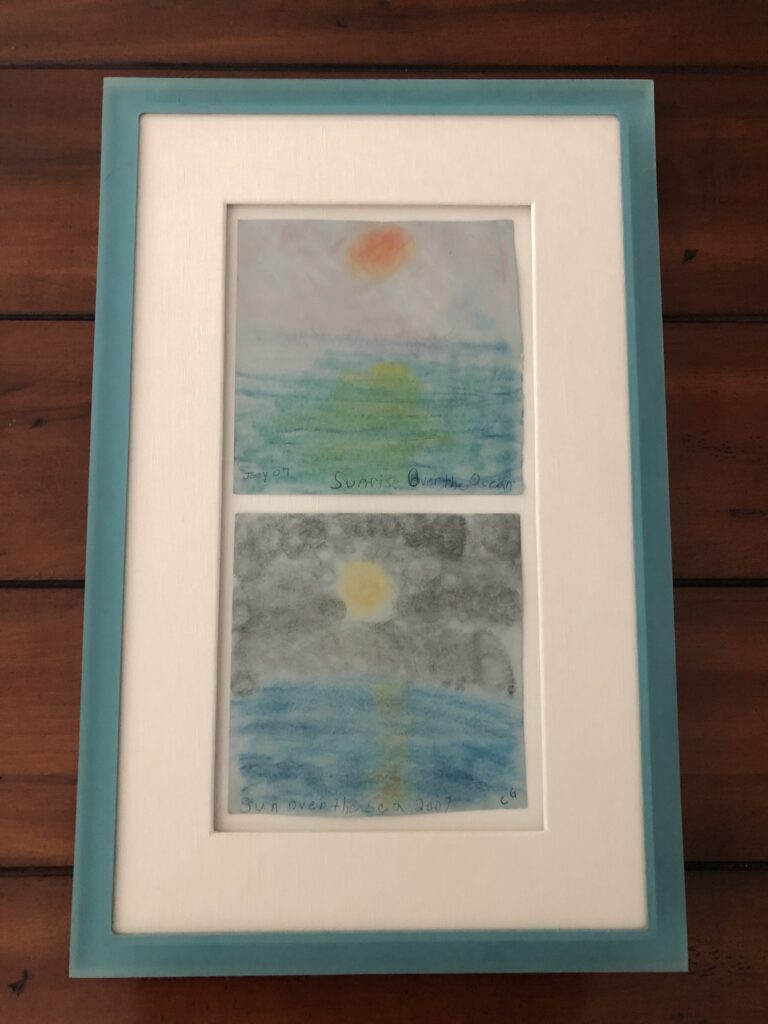
This Seaside Park homeowner has cherished memories of early morning walks to see the sunrise with her young children. She framed these small water colors – made by her then 7 and 9 year olds – using museum-quality techniques and materials which add gravitas to the simple yet meaningful artwork, titles and signatures. An archival envelope is attached to the back with an essay about the family’s time spent as “Sunrise Seekers.”
It’s worthwhile to re-examine keepsakes and trinkets that have been packed away, whether they’re valuable pieces with historical significance or unassuming items with sentimental appeal. As Krueger says, “When framed and preserved properly, the simplest of things can be elevated to a work of art.”
